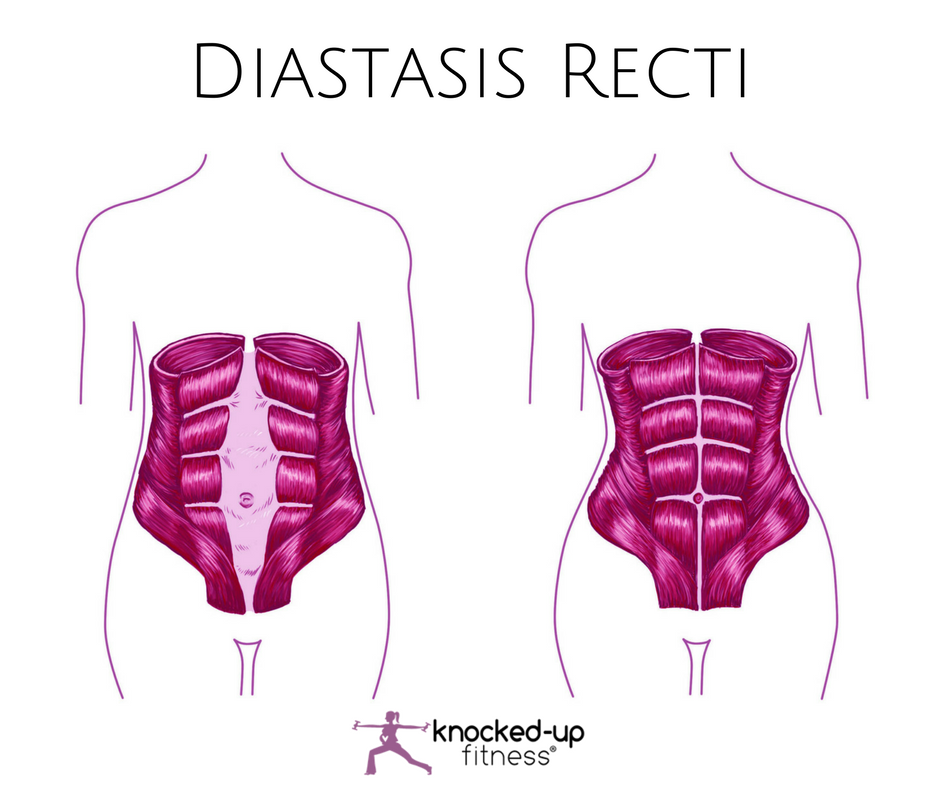Diastasis Recti Self-Check: Assessing Abdominal Separation Post-Birth
Diastasis recti is a common concern among many women, and if you’re wondering whether you might have it, you’re not alone. In this blog post, I’ll answer questions you might have about diastasis recti. I’ll start by guiding you through a self-check process to identify its presence, and then explore the causes behind it. I’ll help you with effective tips to initiate the healing journey and address common concerns related to diastasis recti.
How Do I Know If I Have Diastasis Recti?
The first step in identifying diastasis recti is to be aware of the specific symptoms and signs associated with it. Some common indicators include:
- A visible bulge or ridge running down the center of your abdomen, especially when you contract your abdominal muscles or perform certain movements.
- Feeling a gap or space between your abdominal muscles when you press your fingers along the midline of your abdomen, typically between your belly button and sternum.
- Weakness in your core and experiencing lower back pain or discomfort.
- Changes in your posture, such as an exaggerated arch in your lower back or a “sway back” appearance.
- Noticing a coning or doming shape forming along the midline of your abdomen during specific movements, which could indicate increased pressure on the abdominal wall.
- Experiencing pelvic floor issues, like incontinence or difficulty controlling bladder function.
It’s important to remember that not everyone will experience all of these symptoms, and the severity of the signs can vary from person to person. I have a full FREE guide you can download all about diastasis recti right HERE.
To help you check, I have a video that walks you through a self-check for diastasis recti:
How to Check for Diastasis Recti
What Causes Diastasis Recti?
Diastasis recti can be caused by factors such as pregnancy, excessive crunches, inappropriate core exercises, and weak fascial connections throughout your abdominal area.

How Can I Heal Diastasis Recti?
You might be wondering if it’s possible to heal diastasis recti, and the answer is yes! The most important step is to learn how to properly activate your deep core to strengthen your pelvic floor. If you’re wondering how to do that, or what that even means, my CORE REHAB program walks you through any questions you might have about diastasis recti and gives you the proper exercises and movements to heal. Learn more HERE.
In the meantime, here are some simple tips to implement to heal diastasis recti:
Tips to Heal Diastasis Recti
Properly Activate Your Deep Core: Learn how to activate, relax, and release your deep core muscles. By doing so, you can wake up those fascial connections and initiate the healing process, regardless of how long you’ve been dealing with diastasis recti. Remember, I teach you exactly how to do this in my Core Rehab program!
Strengthen Your Pelvic Floor: Healing diastasis recti is not just about bringing the abdominal muscles together. A strong pelvic floor is also essential for overall core stability and recovery. Incorporate pelvic floor exercises into your routine for better results.
Avoid Intense Ab Exercises: Steer clear of improper “ab exercises” that involve flexion movements like sit-ups and crunches. These can exacerbate diastasis recti and delay healing. Focus on exercises that strengthen the core without putting excessive pressure on the abdomen – I have safe exercises for you in my Core Rehab course.
Improve Your Posture: Work on improving your posture to support the healing process. A proper alignment can alleviate pressure on the abdominal area and aid in diastasis recti recovery.
Listen to Your Body: Pay attention to any discomfort, pain, or signs of coning in your abdominal area during exercises or daily activities. Avoid movements that aggravate the condition and embrace exercises that promote healing.
Holistic Approach: Understand that diastasis recti impacts more than just your appearance; it can lead to other health issues like back pain, pelvic floor dysfunction, and hernias. Take a holistic approach to healing, addressing both the physical and mental aspects of recovery.
By being aware of the specific symptoms and signs of diastasis recti, understanding the causes, and incorporating my healing tips, you can take the first steps toward reclaiming your core strength and body confidence. Remember, healing is possible, and with the right approach, you can improve your overall well-being. This is why I’m so passionate about my Core Rehab program – I want women to feel strong in their bodies and confident in their skin. The Core Rehab program isn’t just another exercise program – it’s a holistic approach to helping you heal physically and mentally.


